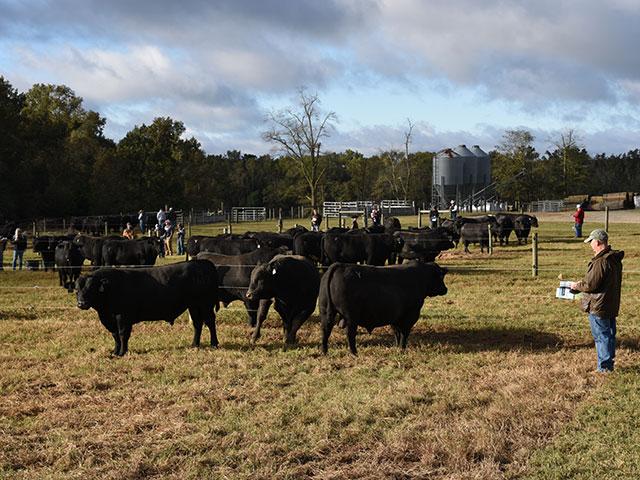Bull Selection
New Selection Program Puts Bull Buyers in the Know
Cow herd size in the U.S. may be on the downturn, but many commercial producers will be positioning to take advantage of strong market signals moving forward. This means bull sales are going to be strong.
For those potential bull buyers headed to sales this fall and into 2023, a new tool is set to be released the beginning of October 2022 to help rank bulls in those seedstock catalogs ahead of the sale. This could go a long way toward helping commercial producers make the most of their investment.
P[L1] D[0x0] M[300x250] OOP[F] ADUNIT[] T[]
University of Nebraska beef genetics specialist Matthew Spangler, with the help of a USDA grant and colleagues at the U.S. Meat Animal Research Center, Kansas State University and Theta Solutions LLC, has developed a program called "iGenDec" that will enable bull buyers to customize selections based on their herd goals.
Here's how it works. Rather than rely solely on selection indexes provided by breed associations, the producer can plug in information from his or her own operation and get customized economic selection indexes for bulls.
For example, if an operation sells calves at weaning rather than backgrounding, the most profitable bull may be different from a neighbor's operation, where there is a different marketing plan. The breed composition of a calf crop would also go into the bull-buying equation. Producers who retain ownership and sell on the grid can enter their finished calves' average feedlot and carcass information. The program will ask for average price received for an operation's cattle as well. Spangler recommends using a multi-year average.
On the cow side, information ranging from herd dystocia percentage, pregnancy rates, average cow age and annual cow cost are also considered. Whether a producer buys, or raises, replacements will also influence the index.
After entering the custom numbers, available bulls, including bulls from different breeds, are put into the calculation.
"Now you can rank those bulls based on their genetic differences and the unique objectives and economics of your operation," Spangler explained. He added that the program was designed to allow a producer to enter and rank an entire digital bull catalog before going to a sale.
Spangler told DTN that iGenDec has been put through extensive alpha and beta testing. The Beef Improvement Federation (BIF) formed a subcommittee to investigate the possibility of hosting the software and making it widely available to the U.S. beef industry.
Check at the BIF's website the first week of October for availability. Spangler said that at that time, cost structure for the program will be available. Users will need to register for an account at the BIF site, as the program is all web-based, so no ordering a copy. For information, go to: www.beefimprovement.org.
(c) Copyright 2022 DTN, LLC. All rights reserved.







